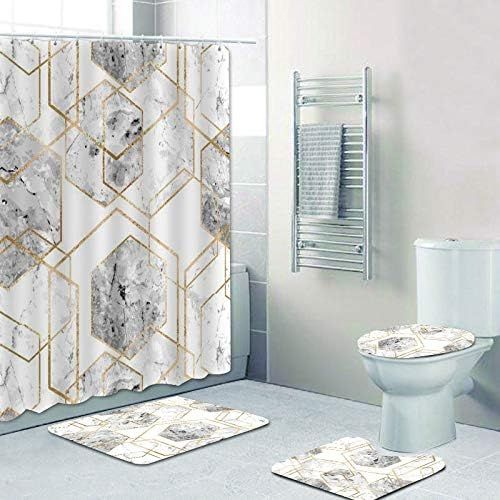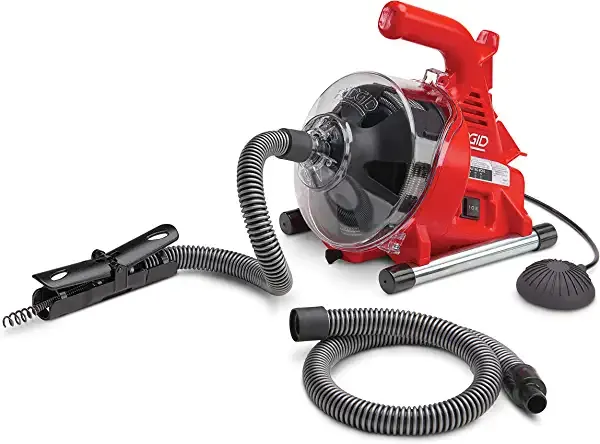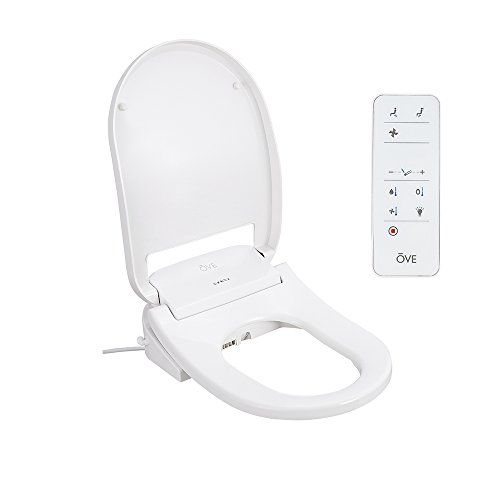What Insulation For Bathroom Walls
Are you wondering what insulation material to use for your bathroom walls? Look no further! This article will provide you with all the information you need to make an informed decision.
When it comes to bathroom insulation, there are several types of materials to choose from. Each has its own benefits and considerations. We will explore the pros and cons of each option, helping you determine which one is best for your specific needs.
Additionally, we will provide step-by-step instructions on how to install insulation in your bathroom walls. By insulating your bathroom, you can enjoy a warmer and more comfortable space, while also potentially reducing energy costs. However, there are a few drawbacks to consider as well.
Finally, we will offer some additional tips to keep your bathroom warm. So, let’s dive in and find the perfect insulation for your bathroom walls!
Key Takeaways
- Proper ventilation is crucial for preventing moisture buildup and mold growth in bathroom walls.
- There are different insulation materials available for bathroom walls, including fiberglass, spray foam, cellulose, and rigid foam insulation.
- Insulation helps maintain a cozy temperature, minimizes noise transmission, improves energy efficiency, and increases comfort in the bathroom.
- When choosing insulation for bathroom walls, factors such as moisture resistance, fire safety, and budget should be considered.
Types of Insulation Materials
When considering the types of insulation materials available, it’s important to explore the various options to ensure the most effective and efficient solution for insulating bathroom walls.
Insulation installation plays a crucial role in maintaining the desired temperature and reducing energy loss in the bathroom.
One commonly used insulation material is fiberglass. It’s lightweight, easy to install, and provides excellent thermal performance.
Another option is mineral wool, which offers superior fire resistance and soundproofing capabilities.
Additionally, spray foam insulation is gaining popularity due to its ability to fill gaps and create an airtight seal.
When comparing costs, fiberglass insulation tends to be more affordable upfront, while spray foam may require a higher initial investment.
However, spray foam insulation can provide long-term energy savings, making it a cost-effective choice in the long run.
Considerations for Bathroom Insulation
When considering insulation for your bathroom walls, there are several key points to keep in mind. First, moisture resistance is crucial to prevent mold and water damage. Look for insulation materials that have a high moisture resistance rating to ensure long-term durability.
Second, noise reduction is important for creating a peaceful and private bathroom environment. Consider insulation materials that have soundproofing properties to minimize noise transmission.
Lastly, thermal efficiency is essential for maintaining a comfortable temperature in your bathroom. Choose insulation materials that have a high R-value to effectively insulate against heat transfer.
Moisture Resistance
For moisture resistance in your bathroom walls, you’ll want to choose insulation that can withstand high levels of humidity and prevent mold growth. When selecting insulation, consider these key factors:
-
Waterproof insulation: Look for insulation materials that are specifically designed to resist moisture. This will help prevent water damage and mold growth in your bathroom walls.
-
Mold prevention: Choose insulation that has properties to inhibit the growth of mold and mildew. This will ensure a healthier environment and minimize the need for frequent cleanings.
-
Vapor barrier: Consider using insulation with a built-in vapor barrier. This will help to control moisture and prevent it from penetrating the walls, reducing the risk of condensation and subsequent mold growth.
-
Proper installation: Ensure that the insulation is properly installed, with attention to sealing any gaps or openings. This will further enhance its moisture resistance capabilities and prevent moisture from seeping into the walls.
By selecting insulation that addresses these considerations, you can effectively protect your bathroom walls from moisture-related issues and maintain a clean and healthy environment.
Noise Reduction
To create a more peaceful and serene atmosphere in your bathroom, consider incorporating insulation materials that effectively reduce noise levels. Soundproofing options for bathroom walls include the use of acoustical insulation, which is specifically designed to absorb and dampen sound vibrations. This type of insulation is typically made from materials such as mineral wool or fiberglass, which have excellent noise reduction properties. By installing acoustical insulation in your bathroom walls, you can significantly minimize the transmission of sound from both inside and outside the bathroom, creating a more tranquil environment.
To help you better understand the effectiveness of different insulation materials in reducing noise, refer to the table below, which compares the Sound Transmission Class (STC) ratings of various options. The higher the STC rating, the better the insulation material is at reducing sound transmission.
| Insulation Material | STC Rating |
|---|---|
| Mineral Wool | 45 |
| Fiberglass | 40 |
| Foam Board | 35 |
| Cellulose | 30 |
| Spray Foam | 25 |
By choosing the right insulation material and ensuring proper installation, you can create a more serene and peaceful bathroom environment by reducing unwanted noise.
Thermal Efficiency
Creating a cozy and comfortable atmosphere in your bathroom can be achieved by maximizing thermal efficiency. Insulation installation plays a crucial role in maintaining the desired temperature and preventing heat loss. By properly insulating your bathroom walls, you can create a barrier that reduces heat transfer and keeps the space warm.
This not only ensures a pleasant experience during colder months but also contributes to energy savings. Insulating your bathroom walls can significantly reduce heat loss, which means your heating system won’t have to work as hard to maintain a comfortable temperature. This can result in lower energy bills and a more sustainable home.
Investing in high-quality insulation materials and professional installation is key to achieving optimal thermal efficiency in your bathroom.
Installing Insulation in Bathroom Walls
When it comes to bathroom renovations, one crucial aspect to consider is which insulation is best for your walls. Proper installation techniques are essential to ensure maximum thermal efficiency and prevent any potential moisture damage.
Here are four cost-effective insulation options to consider:
-
Fiberglass insulation: This type of insulation is commonly used and provides excellent thermal performance. It’s relatively easy to install and offers good moisture resistance.
-
Spray foam insulation: This insulation option provides superior air sealing properties and excellent thermal resistance. It expands to fill all gaps and cracks, creating a tight seal.
-
Cellulose insulation: Made from recycled paper, this insulation is an eco-friendly choice. It offers good thermal performance and is resistant to moisture.
-
Rigid foam insulation: This type of insulation provides high thermal resistance and is suitable for areas with limited space. It’s moisture-resistant and easy to install.
Consider these options when installing insulation in your bathroom walls to create a comfortable and energy-efficient space.
Benefits of Insulating Bathroom Walls
Now that you know how to install insulation in your bathroom walls, let’s explore the benefits of this home improvement project.
By insulating your bathroom walls, you can experience significant energy savings and increased comfort. Insulation acts as a barrier, preventing heat from escaping during the colder months and keeping cool air inside during the summer. This helps to reduce your energy consumption and lowers your utility bills.
Additionally, insulation helps to minimize drafts and air leaks, creating a more comfortable environment inside your bathroom. No more chilly bathroom floors or condensation on the walls!
Insulating your bathroom walls is a cost-effective solution for improving the overall energy efficiency of your home and enhancing your everyday comfort. So go ahead and take the necessary steps to insulate your bathroom walls and enjoy a more energy-efficient and comfortable living space.
Drawbacks of Insulating Bathroom Walls
Despite the potential energy savings and increased comfort, there are a few drawbacks to consider when insulating your bathroom walls. One major concern is moisture control. Bathrooms are high-humidity environments, and if moisture gets trapped within the walls, it can lead to mold growth and damage. Insulation materials such as fiberglass or cellulose can absorb moisture, which creates a breeding ground for mold.
Additionally, if the insulation is not properly installed or sealed, it can create moisture pockets behind the walls, further exacerbating the problem. Another drawback is that insulating bathroom walls can be a labor-intensive process. It requires removing existing wall finishes, installing the insulation, and then replacing the finishes. This can be time-consuming and costly.
Therefore, it’s crucial to carefully consider the potential issues with moisture control and mold prevention before insulating your bathroom walls.
Other Tips for Keeping Your Bathroom Warm
One key to maintaining a warm and cozy bathroom is by using proper ventilation. Effective bathroom ventilation not only helps to eliminate odors and excess moisture but also plays a crucial role in keeping the temperature comfortable.
Here are some energy-saving tips to enhance bathroom ventilation:
-
Install a high-quality exhaust fan: A good exhaust fan will efficiently remove humid air from the bathroom, preventing mold and mildew growth.
-
Use a bathroom window fan: A window fan can help increase air circulation and remove moisture, especially in bathrooms without exhaust fans.
-
Keep the bathroom door open: Leaving the door ajar allows air to circulate freely, helping to maintain a consistent temperature.
-
Utilize natural ventilation: Open the bathroom window or install a vented skylight to allow fresh air to enter and circulate.
By incorporating these simple tips, you can ensure proper bathroom ventilation, prevent moisture buildup, and create a warm and comfortable atmosphere.
Conclusion: Choose the Right Insulation for Your Bathroom Walls
To achieve optimal warmth and comfort in your bathroom, it is crucial that you carefully select the appropriate type of insulation for the walls. Insulating bathroom walls not only helps in maintaining a cozy temperature but also prevents moisture buildup and minimizes noise transmission. When it comes to choosing the right insulation, there are various types of materials available, each with its own benefits.
To help you make an informed decision, consider the following table that highlights some popular insulation materials and their advantages:
| Insulation Material | Benefits |
|---|---|
| Fiberglass | Excellent thermal performance, fire-resistant, affordable |
| Spray foam | Air-tight seal, moisture-resistant, provides soundproofing |
| Cellulose | Environmentally friendly, good thermal and sound insulation |
| Rigid foam | High R-value, moisture-resistant, resistant to mold and pests |
By selecting the appropriate insulation material for your bathroom walls, you can enjoy improved energy efficiency, reduced noise, and increased comfort. Remember to consider factors like moisture resistance, fire safety, and budget when making your decision.
Frequently Asked Questions
What are the potential risks or dangers of not insulating bathroom walls?
Not insulating bathroom walls can lead to risks and dangers such as moisture buildup, mold growth, and heat loss. This can result in structural damage, health issues, and increased energy consumption.
Can I use the same insulation material for both interior and exterior bathroom walls?
Yes, you can use the same insulation material for both interior and exterior bathroom walls. There are various insulation material options available, each with their own pros and cons. However, it is important to consider the complexity of DIY installation.
Are there any specific building codes or regulations that I need to consider when insulating bathroom walls?
When insulating bathroom walls, it is important to consider building code requirements and regulations. These codes may specify the type and R-value of insulation materials that should be used to ensure proper insulation and energy efficiency in the bathroom.
How long does the insulation material typically last before needing to be replaced?
Insulation material lifespan varies depending on factors such as the type of insulation used, climate conditions, and maintenance. On average, insulation materials can last 20-30 years before needing replacement. Regular inspections can help identify any signs of wear or damage.
Is it necessary to hire a professional to install insulation in bathroom walls, or is it a DIY-friendly project?
Hiring a professional for insulation installation in bathroom walls is recommended due to the technical nature of the project. They have the expertise to ensure proper insulation and moisture control, which is crucial. DIY may be cost-effective, but it carries the risk of incorrect installation and potential damage.
Conclusion
In conclusion, it’s crucial to choose the right insulation for your bathroom walls to ensure maximum warmth and energy efficiency. Consider factors such as moisture resistance, R-value, and ease of installation when selecting insulation materials.
Installing insulation in your bathroom walls offers numerous benefits, including improved temperature regulation, reduced energy consumption, and increased soundproofing. However, it’s essential to address any potential drawbacks, such as reduced space and potential moisture issues.
By following proper installation techniques and incorporating other tips for keeping your bathroom warm, you can create a comfortable and efficient space.











.jpg)








